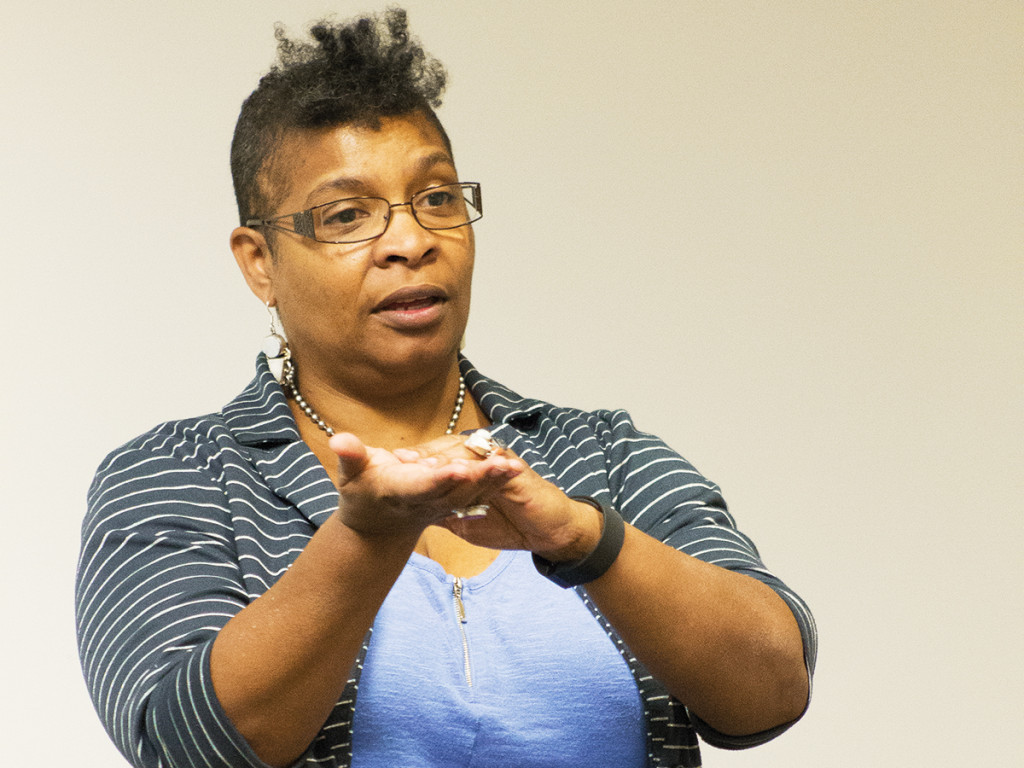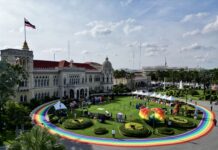
On Thursday, Jan. 21, professors of creative writing Nalo Hopkinson and Rachelle Cruz and Ph.D. candidate in comparative literature, Jaymee Goh, met in INTS 1111A to discuss their experiences curating, editing and writing for science fiction and fantasy anthologies driven by communities of color. The panel was moderated by recent post-doctoral fellow, Brian Hudson, who studies science fiction from indigenous and other ethnic communities.
The conference was formatted as a Q-and-A session and focused on the various post-colonial writing projects that the panelists have had a hand in. The panel was asked to share the inspirations for their projects, and Cruz, co-editor of “Kwento: Lost Things (An Anthology of New Philippine Myths),” answered that the haunting Aswang creature — a housewife who splits in half at night and searches for baby fetuses to suck out of pregnant women — served as her muse. Another source of inspiration was from anthropological work that compared Filipino with European folklore, with Cruz explaining, “I thought it was interesting, this attempt to categorize something that so totally fucks with … boundaries.”
Hopkinson, who is extensively published and renowned in the genres of science fiction and fantasy and has edited numerous anthologies, including her most recent project published through the online magazine “Lightspeed” called “People of Colo(u)r Destroy Science Fiction,” echoed Cruz’s comments about disrupting the Eurocentric mainstream saying, “I’m interested in how as (people of color) … we make incursions into science fiction and fantasy that both play with and mess with boundary.”
Goh, co-editor of an anthology entitled, “The Sea Is Ours: Tales from Steampunk Southeast Asia,” spoke about steampunk’s association with and glorification of colonial history and her attempt to challenge steampunk aesthetics and create a sort of multicultural “altered history” with her work. She also addressed the racial landscape of writing projects, elucidating, “One thing that I noticed with diversity projects is that they still tend to be headed up by white people.” She shared that her project was, in a way, designed to diversify that landscape and showcase Southeast Asian writers including those from her homeland of Malaysia and “bring their voices out to this world stage and to North America.”
Later on in the conference the audience members were allowed to ask their own questions to the panelists. Eric Schwitzgebel, professor of philosophy, asked about advice that the writers have for an Anglo writer writing characters of color and crossing cultural boundaries. Goh answered that this was difficult to answer because “People of color, when we write ourselves, we also make the same mistakes and we also draw on the same stereotypes … because we are taught to see ourselves not quite as human.” She explained that empathy and research into perspective were key. Hopkinson followed up Goh’s answer, saying, “One thing you can do is … make them as fully characterized as possible. I think then, the problems start to fall away a bit.” Cruz’s advice to writers was to interrogate their motives for using characters of color in their stories.
The last questions were asked by Angela Penaredondo, a recent MFA grad in creative writing, and concerned the writers’ future plans and what it was like working in the anthology genre. “I have so many screwball ideas … but it was fun to work on my contemporaries’ work because there were so many people who had never been published before and to be able to bring it to an international scale was really satisfying,” Hopkinson jokingly answered. “Maybe one day I’ll do an anthology called ‘Revolting Hags.’” Cruz responded, “I’ve been immersed in comics and I think it would be really cool to do a (people of color) comics anthology.”








